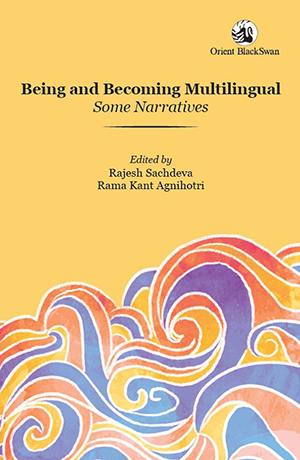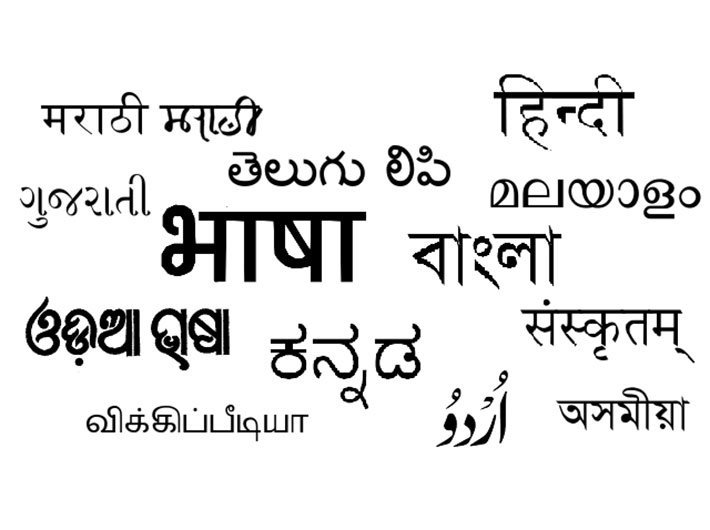Linguist-philosopher Probal Dasgupta shares childhood memories discovering other languages
 Being and Becoming Multilingual: Some Narratives
Being and Becoming Multilingual: Some Narratives
Edited by Rajesh Sachdeva and Rama Kant Agnihotri
Orient BlackSwan, 348 pages, Rs 975.00
Here is a collection of personal narratives about growing up and inhabiting multiple languages and contexts. Written by a group of distinguished linguists and educators, this book offers nuanced insights into what they believe multilingualism is; how their professional lives have been deeply informed by their personal multilinguality; and the politics of language. These narratives recognise the centrality of the speaker in exploring the nature of language contact, providing real life accounts of language use in society and opening new vistas of understanding complex sociolinguistic phenomena in meaningful ways. While this volume provides novel theoretical insights into language acquisition and use, it is also a timely and relevant reminder of how dynamic human communication and linguistic awareness forge relationships that go beyond constructs and agendas.
Editors are Rajesh Sachdeva and Rama Kant Agnihotri. Sachdeva retired as Professor and Director of the Central Institute of Indian Languages (CIIL), Mysore. He has taught, researched and written extensively about multilingualism, sociolinguistic issues, bilingual education in tribal communities, literacy studies and language policy and planning. Agnihotri retired as Professor and Head, Department of Linguistics at the University of Delhi and is currently working with Vidya Bhawan Society, Udaipur. He is interested in and has taught and written extensively about applied linguistics, morphology, sociolinguistics and research methods.
The contributors include G.N. Devy, E. Annamalai and Udaya Narayan Singh, among others. Here is the opening section of a memoir by Probal Dasgupa, who retired as Professor of Linguistics, Indian Statistical Institute, Kolkata. He has written extensively in English, Bangla, French and Esperanto about the linguistics and sociolinguistics of Bangla, Hindi and Indian English. He served as President of the World Esperanto Association from 2007 to 2013. His most frequently cited publication is ‘The Otherness of English: India’s Auntie Tongue Syndrome’ (1993)
Growing Up as a Multilinguist
By Probal Dasgupta
Personal Preliminaries
We have chosen a format that plays up the autobiographical, in part, to get the perennially bored public interested for a change. Fair enough, here is the narrative section peppered with bits of preparation for the conceptualising.
My earliest memories are monolingual ones—in Bangla, a.k.a., Bengali. Moving with parents to a university town in the United States at the age of four meant being expected to acquire English ‘naturally’. But, for obscure reasons, I learnt it culturally, thus completing in Ithaca a written language learning project taken up at a pre-school in Kolkata. My parents, committed to mother tongue cultivation, had an assortment of school textbooks shipped there. I continued to read and write Bangla. Encounters with Indian adults meant superficial exposure to Kannada, Marathi, Hindi—and to the notional primacy of Hindi. A couple of years later, father’s archive-consulting needs involved our spending three months in London and another three months in The Hague. A trip to Scandinavia took us through Germany. I learnt a great deal, at age seven, about the languages of western Europe. My graduate-student parents’ foreign language requirements came to life in Germany and the Netherlands.
In 1961, between the Tagore centenary celebration and the fifteenth of August, I learnt Devanagari. That eight-year-old, eager to go back home, knew that schooling in Kolkata would involve Bangla, English and Hindi. He wondered what the combination was like.
The boys’ school his parents picked for him also wondered which combination should be recommended for this student about to be admitted to Class Four. For primary and early secondary non-Bengali boys, the school ran an English-medium section alongside the Bangla-medium default. From age twelve onwards, instruction was in English only—boys from the two streams were integrated. The teachers handling admission who tested me, puzzled over my 29% score for Bangla. It worried them that, whatever my familiarity with Devanagari as a toy, I did not know Hindi—the first language that came with the English medium package. ‘29% is reasonable,’ they told my parents. ‘We had expected a score closer to 5. He will catch up in a few weeks.’ Bangla medium it was.
Three years of immersion in the ‘H’ (High, Sadhu) variety of the diglossic codification of Bangla that still drove schooling in the sixties meant a clash between the city’s entrenched goalposts and parent-improvised personal settings. Home lessons in Ithaca, drawing on assorted textbooks, had kept me rooted in the ‘L’ (Low, Chalit) variety of written Bangla. I was only passively acquainted with the High variety in which I was now expected to write stereotypical, formula-generated essays—a new genre embedded in a rigid pedagogy. The framework relied on rote learning, a far cry from the innovative methods I had experienced in Ithaca and The Hague. The rigid pedagogy of Kolkata schools reminded me of my three months of schooling in London—an unpleasant memory.
This new focus on High Bangla elicited curiosity. I started reading ‘authentic’ High prose—by Bankimchandra Chatterjee—and ran into Sanskrit, which I began to learn on my own. I asked what this was all about.
‘High Bangla was the way Bangla used to sound five centuries ago, I was told, and writers sometimes still use that style.’
‘You mean languages change through time?’
‘That’s right; a long time ago it was not even Bangla, it was Sanskrit.’
‘This sounds like fun; do some grown-ups work these things out?’
‘Yes they do; some of the uncles you met at Cornell do it for a living, like Ashok Kelkar, Debi Prasanna Pattanayak, Rafiqul Islam. They are called “linguists”.’
‘I would love to do that when I grow up!’
‘We had to learn languages for our doctoral work at Cornell, there are these books lying around you might look at. A linguist may need to know some French, some German, some Dutch.’
I got started on Sanskrit but did glance at some of the other books too.
The stifling rigidity of the pedagogic practices at school made me chafe. I carved out the bit of cement under my seat in the classroom, made a personal asteroid of it, and floated outside the school building, looking in on the boys and teacher, watching it all. This fantasy asteroid—a meme drawn from The Little Prince, the last book I had read in Ithaca—gave me cultural asylum through those opaque years.
Nature, however, took its own course. Shortly after my tenth birthday, the anarchic diet crowdsourced by my parents’ relatives and ‘friends’ acting on an organism not yet conversant with the microbial fauna of the tropics, carried me to death’s door. Hepatitis. Oxygen cylinders. Medication that worked at last, in the nick of time. Bed rest for four months.
Going back to school, one is far less agile—a fatal flaw at a boys’ school. Banished from the playground. Solitude. The asteroid gives cold comfort. I have used up what it could do for me. For serious relief I turn to those books waiting for me, those invitations to teach myself French, German, Dutch, plus gramophone records with set conversations and tourist-friendly phrases.
Catching up with school after missing a whole term is a challenge at age ten. Surplus time and energy—in reasonable supply if one has been banished from the playground and does not have neighbourhood boys to play with for the next three years—cannot produce persistence and focus. Each language, approached by this method, only holds my attention for three months or so. Language textbooks of the ‘self-taught’ genre are reasonably priced. Father gets me the ones I ask for (beyond the ones for French, German and Dutch we already have)—Russian, Chinese, Malay, Arabic, Indonesian. My butterfly mind flits from language to language, retaining bits and building patterns.
The patterns begin to make some sense thanks to Teach Yourself Comparative Linguistics (Lord, 1966) and The Story of Language (Barber, 1965). I am still hooked on the picture of a diachrony-rooted linguistics, but I watch My Fair Lady (age twelve) and add phonetic transcription and analysis to the mountains a budding linguist must play-climb. But there is an unexpected tweak.
During our stay in Ithaca, father had noticed my fascination with astronomy and space travel. He used to rustle up mini-stories of the science fiction genre. It did not hurt that I read Premendra Mitra’s Prithibi chhaariye (‘Leaving Earth’) at age seven. Now, in post-hepatitis Kolkata at age eleven, I notice a Premendra Mitra story called ‘Chhnuch’ (‘Needle’) casually mentioning an ‘international language Esperanto’. When Mario Pei’s book The Story of Language, picked up at age twelve, devotes entire chapters to Esperanto and the global link language question, I get seriously hooked. When I am fourteen, my parents get me Teach Yourself Esperanto. I flit through it, half-expecting deep down that here too I will not make it to the end and will move on to the next object of interest. But—surprise—by the end of the summer holidays, before my fourteenth birthday, I have learnt basic Esperanto. I soon have pen pals and join the association.
[Excerpt reproduced with permission of the publishers.]
